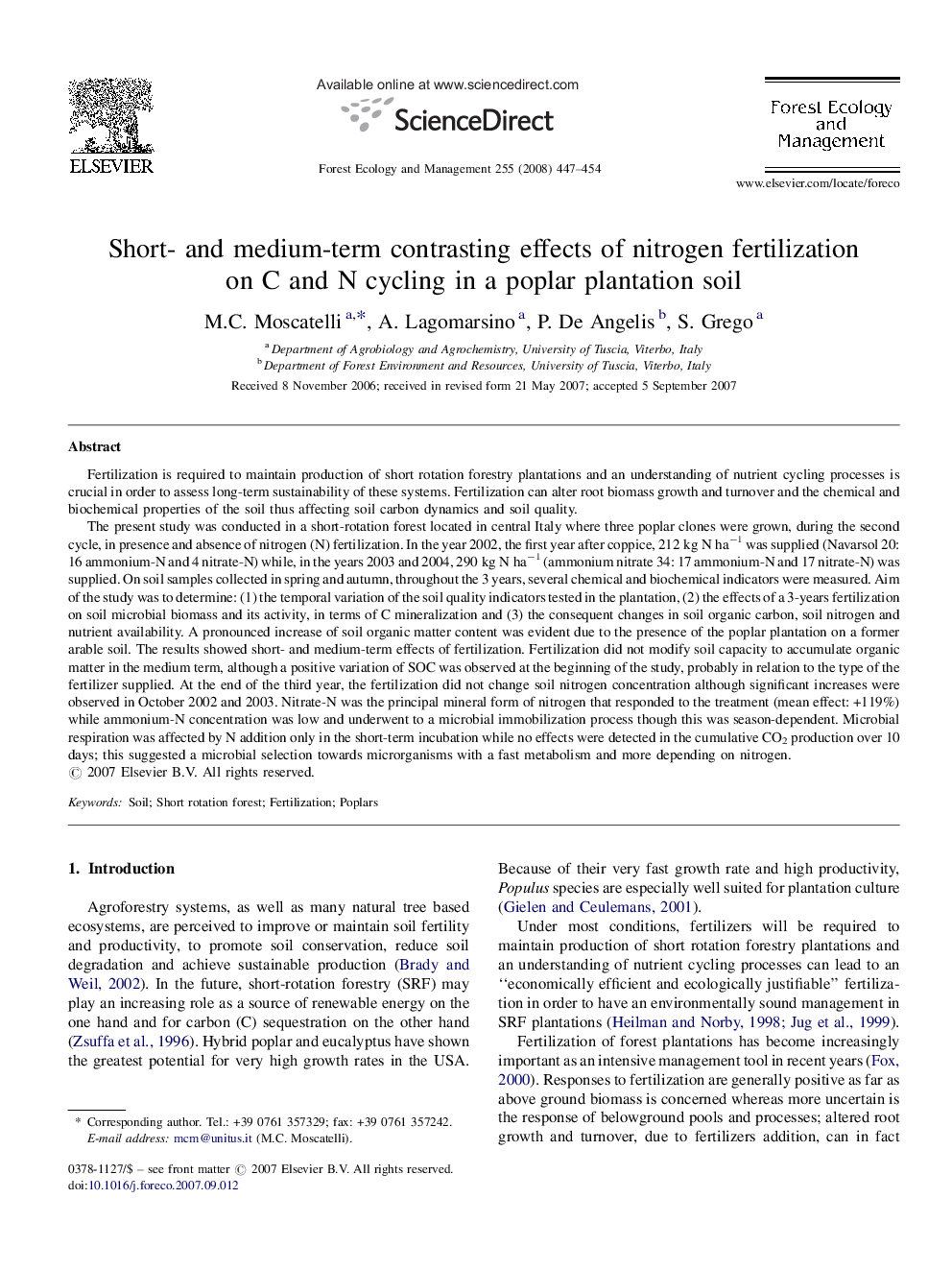| Article ID | Journal | Published Year | Pages | File Type |
|---|---|---|---|---|
| 89823 | Forest Ecology and Management | 2008 | 8 Pages |
Fertilization is required to maintain production of short rotation forestry plantations and an understanding of nutrient cycling processes is crucial in order to assess long-term sustainability of these systems. Fertilization can alter root biomass growth and turnover and the chemical and biochemical properties of the soil thus affecting soil carbon dynamics and soil quality.The present study was conducted in a short-rotation forest located in central Italy where three poplar clones were grown, during the second cycle, in presence and absence of nitrogen (N) fertilization. In the year 2002, the first year after coppice, 212 kg N ha−1 was supplied (Navarsol 20: 16 ammonium-N and 4 nitrate-N) while, in the years 2003 and 2004, 290 kg N ha−1 (ammonium nitrate 34: 17 ammonium-N and 17 nitrate-N) was supplied. On soil samples collected in spring and autumn, throughout the 3 years, several chemical and biochemical indicators were measured. Aim of the study was to determine: (1) the temporal variation of the soil quality indicators tested in the plantation, (2) the effects of a 3-years fertilization on soil microbial biomass and its activity, in terms of C mineralization and (3) the consequent changes in soil organic carbon, soil nitrogen and nutrient availability. A pronounced increase of soil organic matter content was evident due to the presence of the poplar plantation on a former arable soil. The results showed short- and medium-term effects of fertilization. Fertilization did not modify soil capacity to accumulate organic matter in the medium term, although a positive variation of SOC was observed at the beginning of the study, probably in relation to the type of the fertilizer supplied. At the end of the third year, the fertilization did not change soil nitrogen concentration although significant increases were observed in October 2002 and 2003. Nitrate-N was the principal mineral form of nitrogen that responded to the treatment (mean effect: +119%) while ammonium-N concentration was low and underwent to a microbial immobilization process though this was season-dependent. Microbial respiration was affected by N addition only in the short-term incubation while no effects were detected in the cumulative CO2 production over 10 days; this suggested a microbial selection towards microrganisms with a fast metabolism and more depending on nitrogen.
